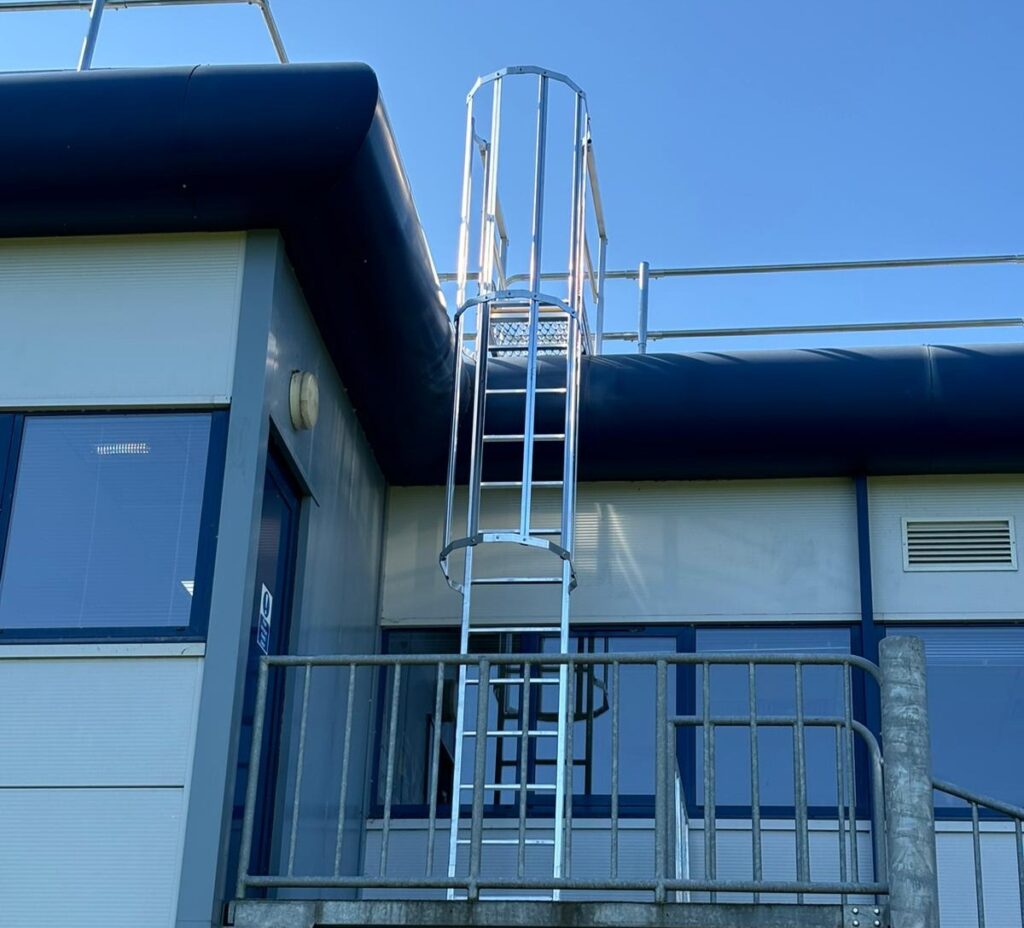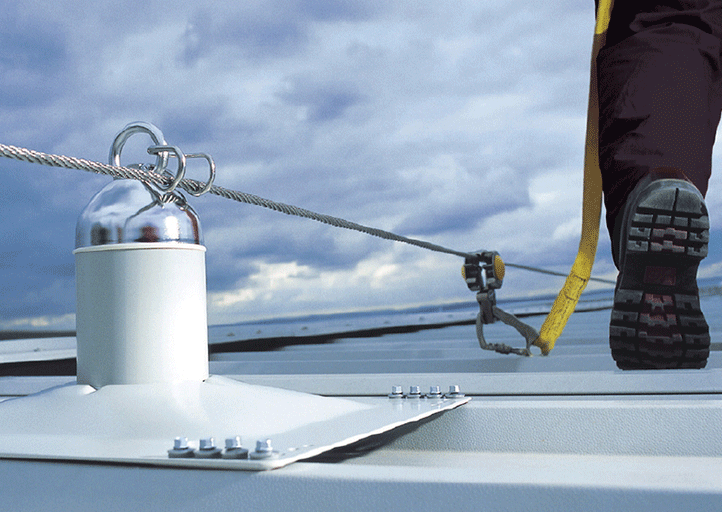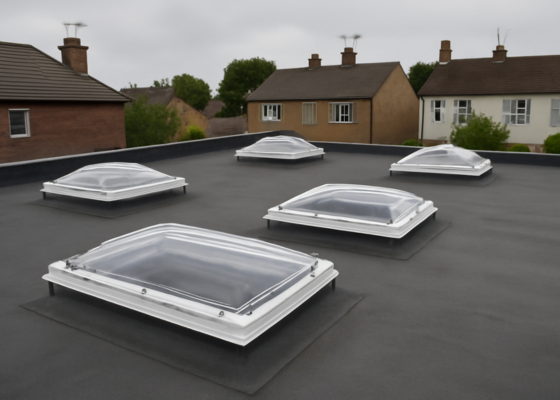Installing fall protection isn’t just about ticking a box for compliance. It’s about choosing the right system for your buildings, your risks and the people who will use it. But with so many different solutions available, it can be difficult to know where to start.
So, to help you make an informed decision, here are 7 essential questions to ask before installing any fall protection system on your roof.
Installing fall protection – what to ask
1. Who needs access to the roof – and how often?
Understanding how frequently your roof is accessed and by whom is the foundation for any fall protection plan. Is it used daily by maintenance staff? Occasionally, by contractors? Or rarely at all?
The level and type of use will influence whether you need permanent edge protection, a fixed lifeline system or just safe access points for inspection work.
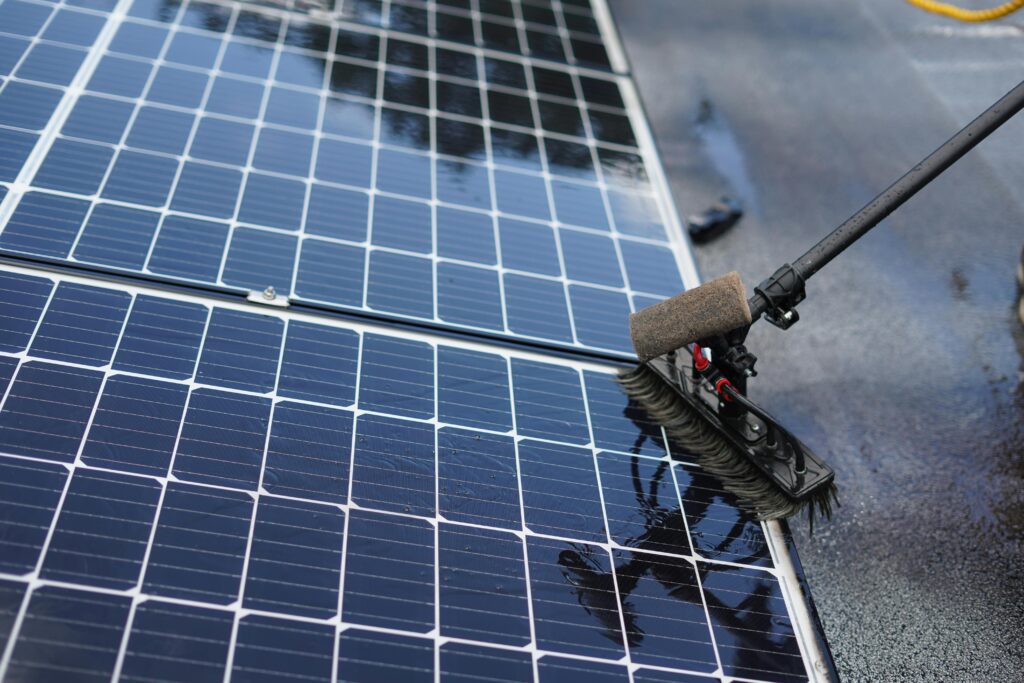
2. What kind of work is being carried out at height?
The tasks performed on your roof will affect the type of protection required. Changing filters on HVAC units, cleaning gutters, inspecting solar panels or carrying out reactive maintenance all come with different risk levels.
Occasional inspection may require guarded access routes and clearly marked walkways, especially if edge protection is already in place. Routine maintenance or plant servicing in areas where workers are frequently exposed may require permanent horizontal lifeline systems or individual anchor points used in conjunction with harnesses and lanyards.
Solar panel inspection and cleaning, particularly where fragile materials are present, may require a combination of mobile man anchors, roof access walkways, or fall restraint systems to prevent workers from reaching hazardous areas.
Choosing the right system depends not only on how often the roof is accessed but also on how close to the edge people need to work and what they’re doing while they’re up there.
3. What risks are present on the roof?
A professional roof survey is the best way to identify all potential hazards when installing fall protection. These could include:
- Unprotected edges or parapets under 1100 mm high
- Fragile rooflights or roof sheets
- Obstructed access points
- Slippery or uneven surfaces
- Limited space to manoeuvre safely
Understanding the full risk profile of your roof is essential before choosing a fall protection system.
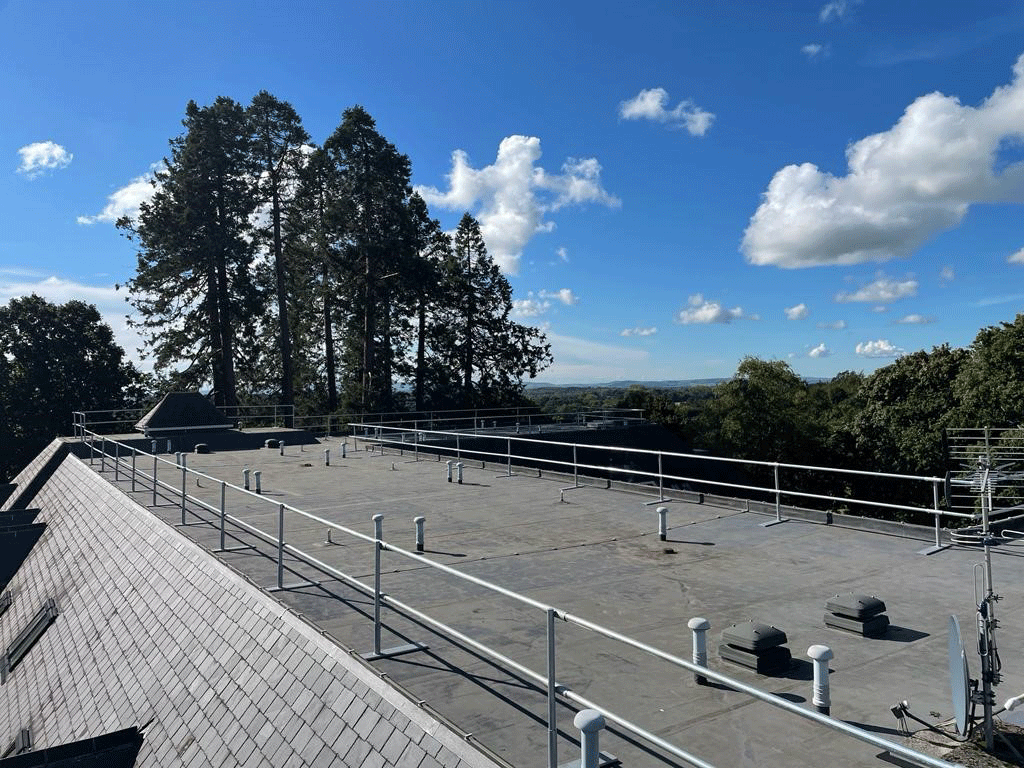
4. What type of fall protection is most suitable – collective or personal?
There are two main categories of fall protection:
- Collective protection (like guardrails) doesn’t rely on individual users taking any action. It’s always in place and offers constant protection.
- Personal protection (like harnesses and lifelines) requires users to wear equipment and connect to fixed or portable anchor points.
Collective systems are preferred under the Work at Height Regulations because they protect everyone. But personal systems may be more suitable in limited spaces or for temporary access.
5. Is the roof structure strong enough to support a fall protection system?
Before installing anything, it’s important to check that the roof can physically support the system, particularly if you’re considering fixed guardrails or anchorage points.
Our team at Height of Safety always evaluates the roof’s structure and condition as part of our rooftop safety survey process to ensure that any installed systems are safe and compliant.
6. How will people safely access and exit the roof?
Even the best fall protection system is no use if it’s difficult or dangerous to access the roof. You need to think about ladders, hatches, walkways, and transition points. Every step from ground level to the working area should be taken into consideration.
Adding safe access solutions at the same time as fall protection ensures the entire journey is protected, not just the edge.
7. How will the system be maintained and recertified?
Like any safety equipment, fall protection systems need regular inspections and annual recertification to stay compliant.
Ask yourself:
- “Who will maintain the system?”
- “How easy is it to inspect?”
- “Do you have a plan in place for re-training staff or updating procedures?”
When choosing a fall protection provider, select one that installs systems AND offers ongoing inspections and recertifications to ensure long-term compliance.
Installing fall protection – Ready to make the right choice?
Fall protection isn’t one-size-fits-all. Asking the right questions before installation helps you choose a system that’s not just compliant but also effective, safe, and tailored to your building, tasks, and people.
If you’re unsure where to begin, our expert team can carry out a comprehensive rooftop survey and guide you through your options step by step.

